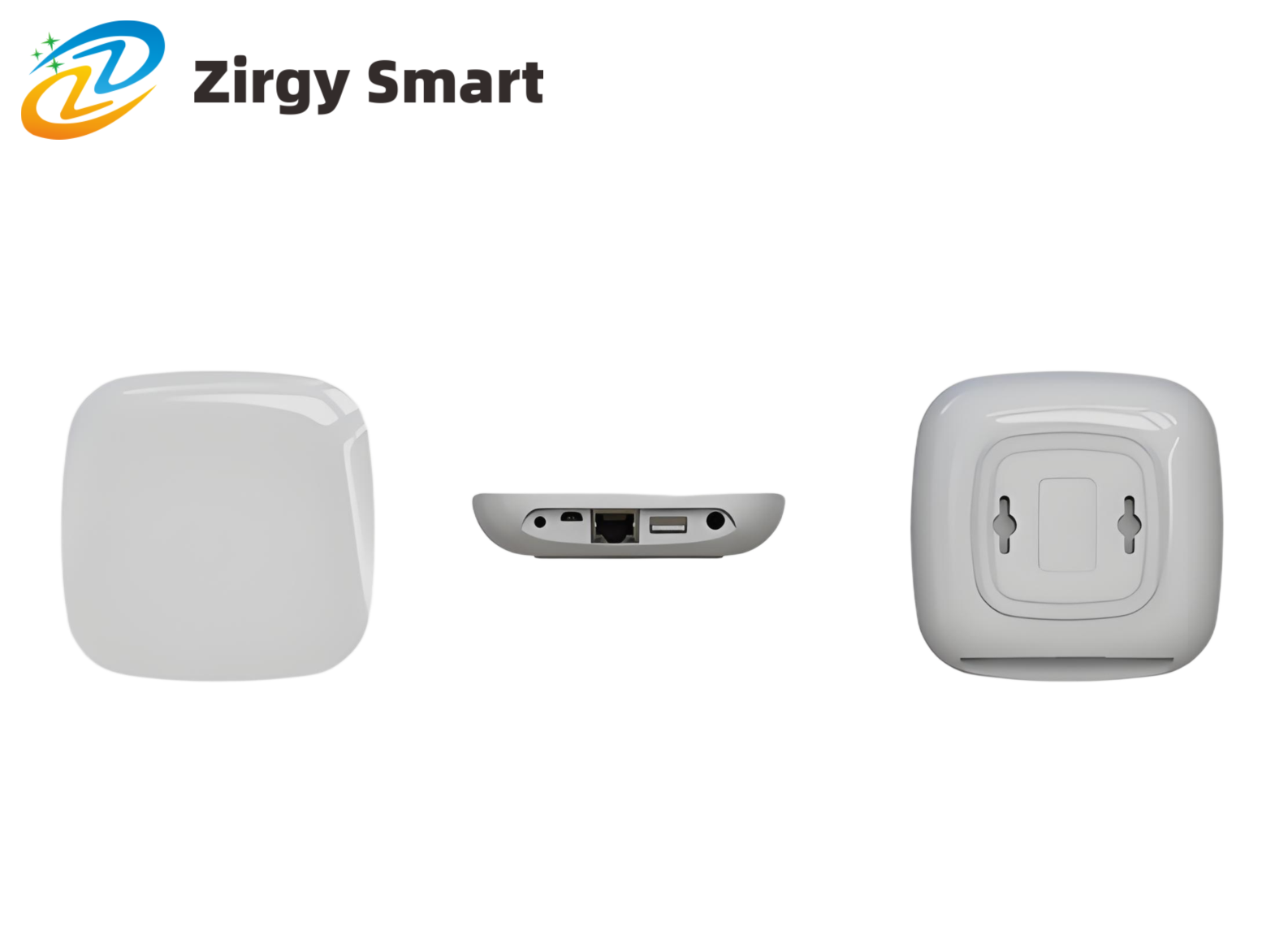About Zirgy
[+]

export@shzjsmart.cn

Address
3F, Building 1, 875 Qiuxing Road, Pudong New District, Shanghai
Ⅰ Product introduction
Name: Install base station ZJB06
The active base station is installed using active wireless communication technology, highly sensitive and low-power technology design, with strong anti-interference ability and high-speed card reading ability, and can obtain electronic labels, mainly used for indoor label data reception.
The active base station is installed using active wireless communication technology, highly sensitive and low-power technology design, with strong anti-interference ability and high-speed card reading ability, and can obtain electronic labels, mainly used for indoor label data reception.
Ⅱ Technical parameters
| Specifications | 106*106*27 | Operating voltage | USB/5V |
| Operating frequency | Active, active 2.4GHz | Operating current | ≤500mA |
| Once quantity | More than 200 | Recognition distance | <30m |
| System communication interface | Rj45 | Waterproof rating | IP50 |
| Shell material | ABS plastic | Communication mode | |
| Antenna directional angle | <180 degrees | Bluetooth accuracy | <30cm |
| Broadcasting power | -30~+4 dBm | Broadcasting frequency | 100ms~10s |
| Anti-electromagnetic interference | 10V/m0.1 ~ 1000MHz AM electromagnetic wave | ||
Ⅲ Product usage
● Connect the device to the same router as the computer (make sure it is on the same network segment)
● Search for devices and change parameters through detection tools:
Open the TagdingArmCoreFrm.exe tool, click the "Search device" button, all the fusioncube devices connected to the network will be displayed. In order to modify the IP address of the device and the current LAN IP network in the same network segment,
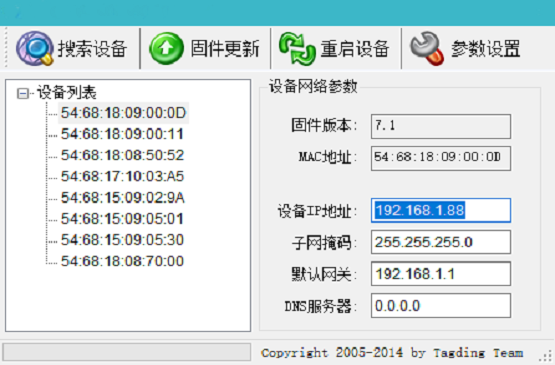
For example, after changing the IP address of the device to 192.168.1.87, click Parameter Settings to complete the change.
Ⅳ Set device parameters using a web browser
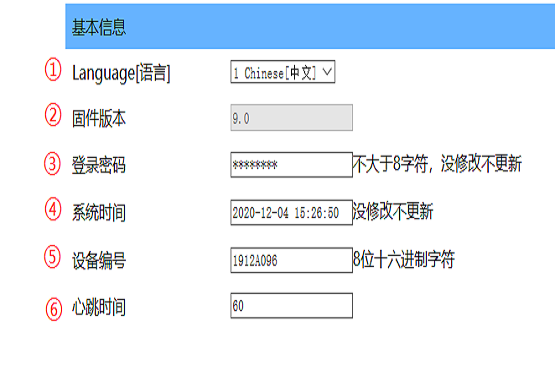
① English and Chinese switching options
② Firmware version used by device retaining wall
③ The login password entered on the configuration page is not available by factory default
④ Device current time
⑤ A specific ID number for each device
⑥ Communicate once in a while to check whether the device is online (60 seconds by default)
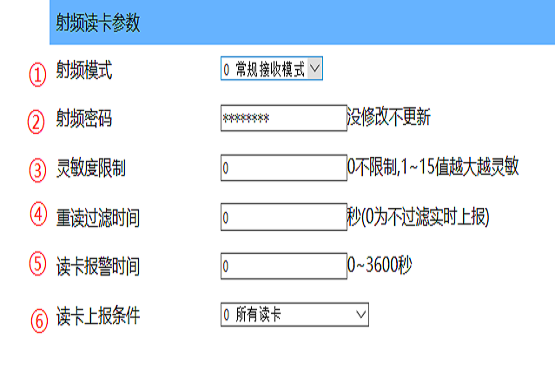
① Switching between modes; Conventional receiving mode: Read 2.4g label use
Conventional response mode: used for answer sheet labels, base stations
Enhanced ** mode: Increase the power to achieve better receiving status, not recommended for long-term use
Active mode: for receiving active class tags (ZJB06 supports switching between conventional and active modes)
If the label cannot be used properly after the mode is changed, change the 2.4g label back to the normal mode
② You are not advised to change the RF password. After the password is changed, it cannot be synchronized with the label
③2.4g distance adjustment, 0 distance, but will not display sensitivity value, 1 small 15 large (sensitivity value display)
④ The label read repeatedly within the set time is uploaded only once, and the default real-time upload is 0 seconds
⑤ Suitable for TD-PJ15, the light flashes once every set time, and the default value 0 is off
⑥ All read cards: The label ID received by the base station will be uploaded
Match Low frequency drive address only: This option causes the reader to receive only the Low Frequency number of the Low Frequency Drive Parameter

Displays the current network parameters of the device
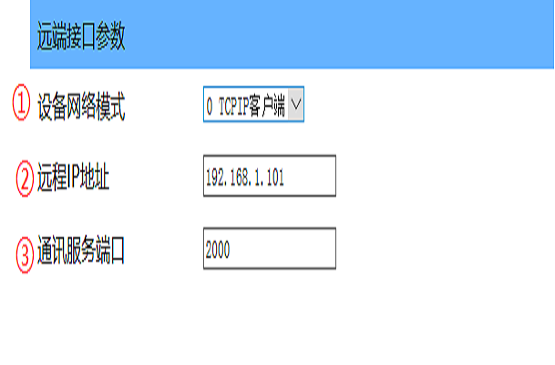
① The device generally applies to the TCPIP. No modification is required
② Set the IP address of the computer or server to which the data received by the device is uploaded
③ The default communication port 2000 is modified according to the service port used by the customer
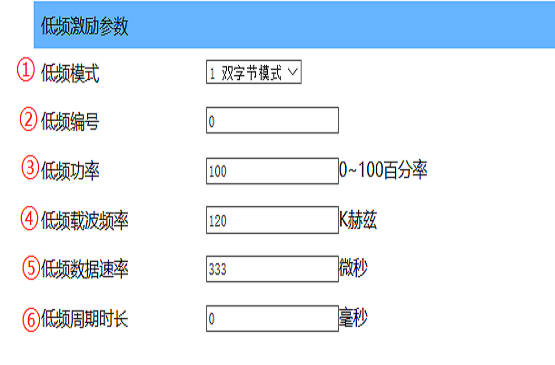
① Single byte off low frequency output; Double byte for regular cards; Enhanced mode for special cards; Default double byte mode
② Low frequency numbers are used to identify 125k address codes
③125k activation distance adjustment 0 min 100 Max
④ Manufacturer debugging options, users do not modify, the default value is 120
⑤ Manufacturer debugging options, users do not modify, the default value 333
⑥ Set the working interval of 125k
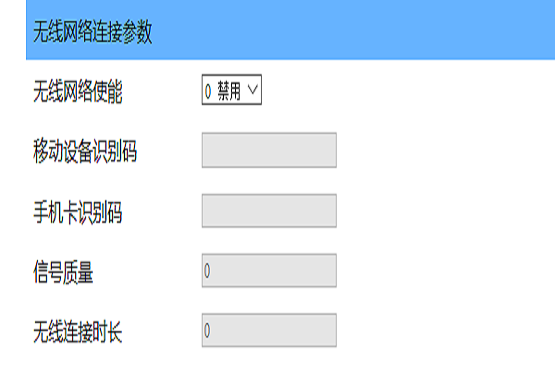
This function is suitable for base stations that support 4g cards, open and close options, and display information about the Internet of Things card

All parameters will take effect only after you click "Save and restart"
Ⅴ Network communication protocol
● Packet definition
Packet format (total 40 characters)
| Name | Head mark | Device number | Device date time | Tag number | Sign | Data | Historical total | Checksum |
| Descriptions | # | Hexadecimal | Decimalism | Decimalism | Random | Hexadecimal | Hexadecimal | * |
| Number of characters | 1 | 8 | 12 | 10 | 1 | 2 | 4 | 2 |
● Packet details:
| Serial number | Definitions | Instructions |
| 1 | Head mark | ‘#’ |
| 2 | Device ID7(H) | Content format: hexadecimal character format Equipment type, equipment number or venue number, can be modified (go to the equipment management page can be modified) (This data refers to the device number of the card reader, |
| 3 | Device ID6(H) | |
| 4 | Device ID5(H) | |
| 5 | Device ID4(H) | |
| 6 | Device ID3(H) | |
| 7 | Device ID2(H) | |
| 8 | Device ID1(H) | |
| 9 | Device ID0(H) | |
| 10 | Annual high (D) | Content format: decimal character format time Year, month, day, minute and second |
| 11 | Annual low (D) | |
| 12 | Monthly high (D) | |
| 13 | Monthly low (D) | |
| 14 | Daily high (D) | |
| 15 | Daily low (D) | |
| 16 | Hour high (D) | |
| 17 | Hour low (D) | |
| 18 | Minute high (D) | |
| 19 | Minute low (D) | |
| 20 | Second high (D) | |
| 21 | Second low (D) | |
| 22 | Card number 10 digit (D) | Card number Content format: decimal character format 2.4G card number of the wristband |
| 23 | Card number 9 digit (D) | |
| 24 | Card number 8 digit (D) | |
| 25 | Card number 7 digit (D) | |
| 26 | Card number 6 digit (D) | |
| 27 | Card number 5 digit (D) | |
| 28 | Card number 4 digit (D) | |
| 29 | Card number 3 digit (D) | |
| 30 | Card number 2 digit (D) | |
| 31 | Card number 1 digit (D) | |
| 32 | Function flag bit (C) | Content format: Any character, the upper case character of the flag bit is normal, the lower case letter of the flag bit is low A/a: Positioning function. Label data 1 indicates the low-frequency positioning address code collected by the label. B/b: Remove the alarm function S/s: alarm function, label data 1 value 01 indicates distress alarm, 02 indicates acceleration alarm H/s: Heart rate function. Label data 1 indicates the heart rate collected by the label, and data 2 indicates the blood oxygen value. T/t: indicates the temperature function. Label data 1 indicates the integer value of body temperature, label data 2 indicates the minor value of body temperature, and label data 3 indicates the ambient temperature. |
| 33 | Tag data 1 | |
| 34 | ||
| 35 | Tag data 2 | |
| 36 | ||
| 37 | Tag data 3 | RSSI Indicates the signal strength value. A high half byte of 0 to F indicates the signal strength, a low half byte of 1 to 4 indicates the corresponding channel number |
| 38 | ||
| 39 | High 4 digits of the checksum (H) | Content format: hexadecimal character format Check and byte, add up the hexadecimal values of the first 38 characters, plus the check code value here, and the combined and trailing byte values are zero |
| 40 | Low 4 digits of the checksum (H) |
● Check sum example:
Example: # 000000011504180808090022046518 e990000c2
According to the above example, the verification code verification method is as follows:
Ⅵ Network operation instruction
| Names | Indicators | Parameters | Examples | Return value |
| Get version number | #GET_VER | None | #GET_VER | VER:?.? |
| Get system time | #GET_TIME | None | #GET_TIME | YYYY-MM-DD HH:MM:SS |
| Set system time | #SET_TIME | YYYY-MM-DD HH:MM:SS | #SET_TIME 2015-03-1517:00:00 | OK |
| Get history | #GET_HISTORY | None | GET_HISTORY | Data is packaged and sent back |
| Factory reset | #FACTORY | None | #FACTORY | OK |
Ⅶ Network heartbeat packet mechanism
To ensure connection reliability and check whether the device is online in real time, the device sends heartbeat packet data to the server at intervals (60 seconds by default).
● Data format for sending heartbeat packets (40 characters) :
The data format of the heartbeat packet is the same as that of the above card reading packet. The card number in the packet is 0000000000.
Example: # 0331 df001602271623570000000000000000092
● The data format of the server to send the confirmation packet (24 characters) :
In order to keep the system time of the device consistent with that of the server and automatically restart the device to reconnect to the network when the system network is abnormal (if the automatic restart function is enabled), the server must return data after receiving the heartbeat packet sent by the device. The format of the return packet is as follows:
| Name | Head mark | Command code | Device date | Device time |
| Description | # | ACK | 10 bit date characters | 8 bit date characters |
| Example: #ACK 2015-05-09 08:14:08 | ||||
Ⅷ Common test exception handling
● Detection tool can not search the device: Detection tool can search the device across the network segment, you can eliminate the problem of improper device parameter setting, first observe whether the green indicator of the device is steady on, no light indicates that the device is not working, or the device has a power supply failure. Then check whether the network port indicator is steady on, and rectify the network cable and connection faults.
● The detection tool can search for the device, but the web browser does not respond when entering the device IP address: First use the detection tool to check whether the device's IP address is in the same LAN network segment, and the server's LAN IP address can be viewed through the network connection properties. Use different browsers to test.
● TCP/IP test software can not read the electronic label: first check the device server IP address Settings and port numbers are consistent. Then check whether the system firewall restricts the corresponding port, you can close the system firewall and firewall software before testing.
Ⅱ Product real-shot
